If you want to fly private between California and New York nonstop, you’ll need a midsize jet or larger and at least two pilots. However, Honda Aircraft Company wants to change that.
This week at the National Business Aviation Association’s Business Aviation Convention and Exhibition in Las Vegas, Honda unveiled its concept for the HondaJet 2600. Although only a prototype, Honda is touting some game-changer features. Most notably, the manufacturer says that this would be the first light jet capable of nonstop flights across the U.S. and the first transcontinental jet designed for single-pilot operation. Today, light jets can only fly three to four hours at a time and require one or two fuel stops on cross-country trips.
Want more airline-specific news? Sign up for TPG’s free biweekly Aviation newsletter!
The design is based on the original HondaJet and HondaJet Elite. Like the previous models, this plane would feature a unique over-the-wing engine mount configuration. This helps improve aerodynamics and allows the planes to fly faster, higher and further.
Honda expects the model 2600 to boast a high cruise speed of 450 knots, class-leading maximum operating altitude of 47,000 feet and range of 2,625 nautical miles.
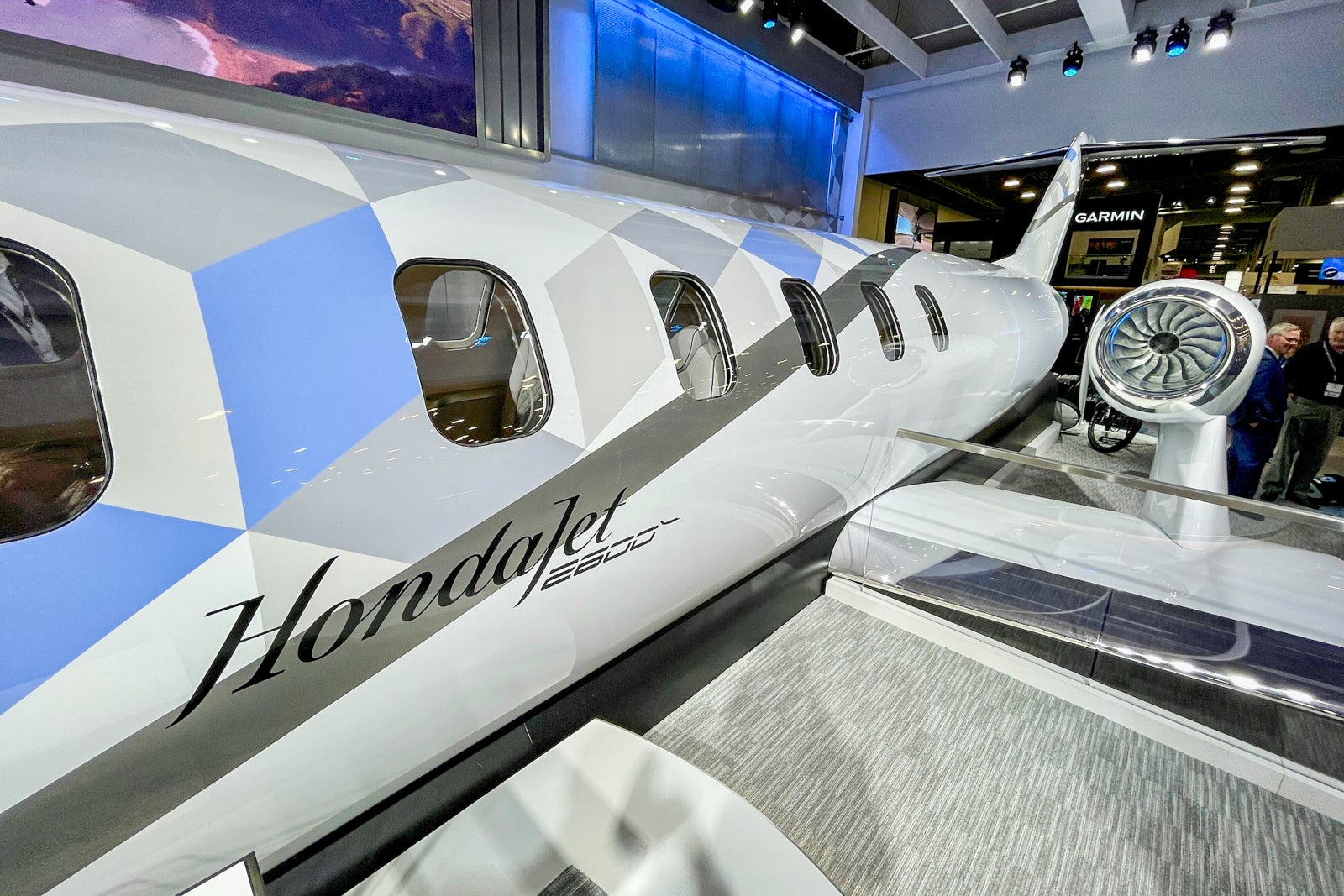
Inside, there will be seating for up to 11 occupants, depending on the configuration. Honda says that the over-the-wing engine mounting configuration also allows the cabin to be quieter and more spacious than conventional light jets.
Related: The cheapest ways to get the private jet experience
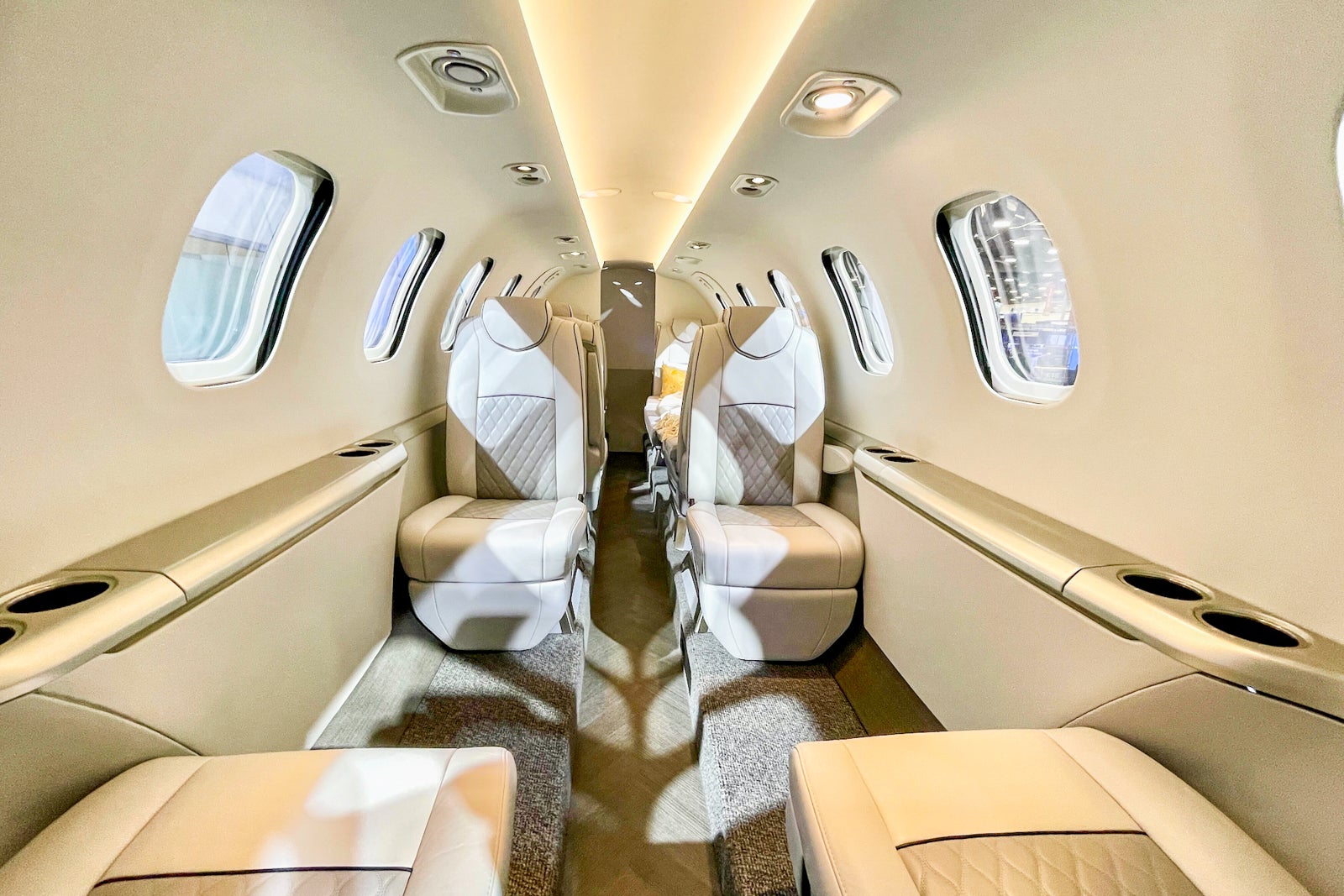
Unlike many jets, the seats won’t need to be folded down to be converted into a bed. Rather, Honda designed a special mattress that will lie across two seats.
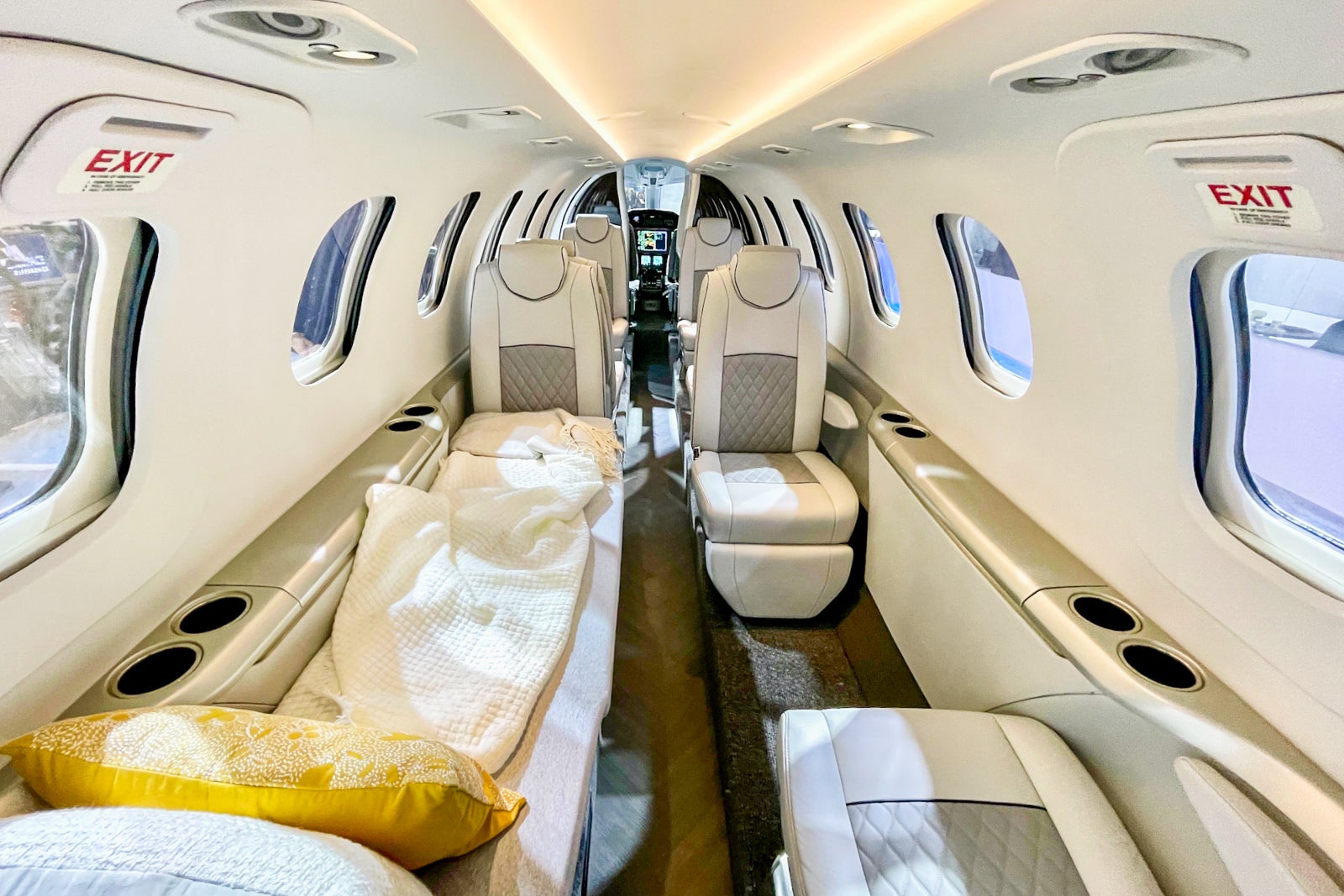
Other features of the cabin will include a full-height galley and an enclosed lavatory.
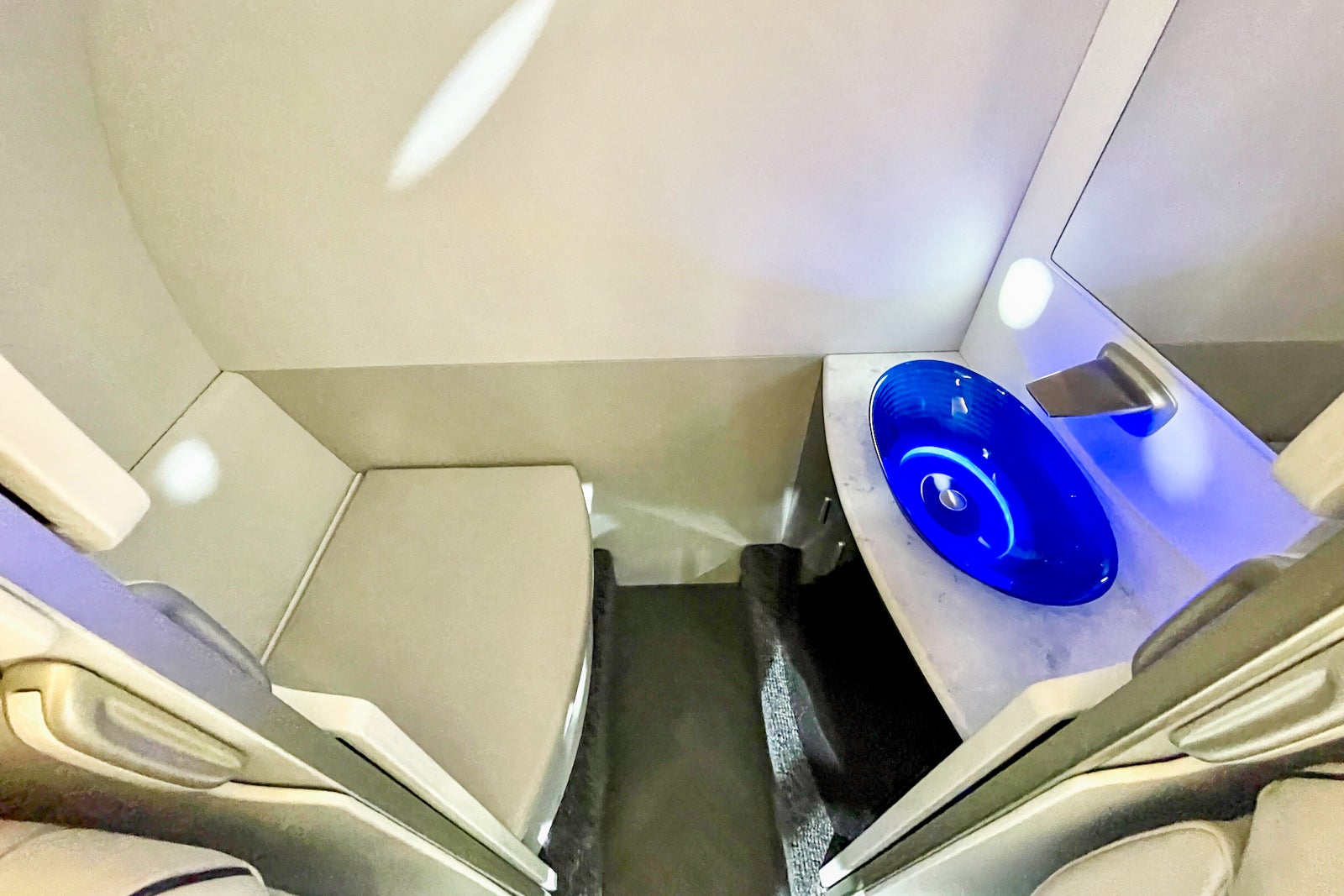
Although there are two seats up front, like the previous models, the aircraft was designed to be flown by just one pilot. This would make it the first transcontinental passenger jet designed for single-pilot operation. Honda says that this is possible due to advanced flight tech and electronics, including autothrottle and autobrake, which would reduce pilot workload.
Related: The golden age of travel isn’t over — it’s evolving
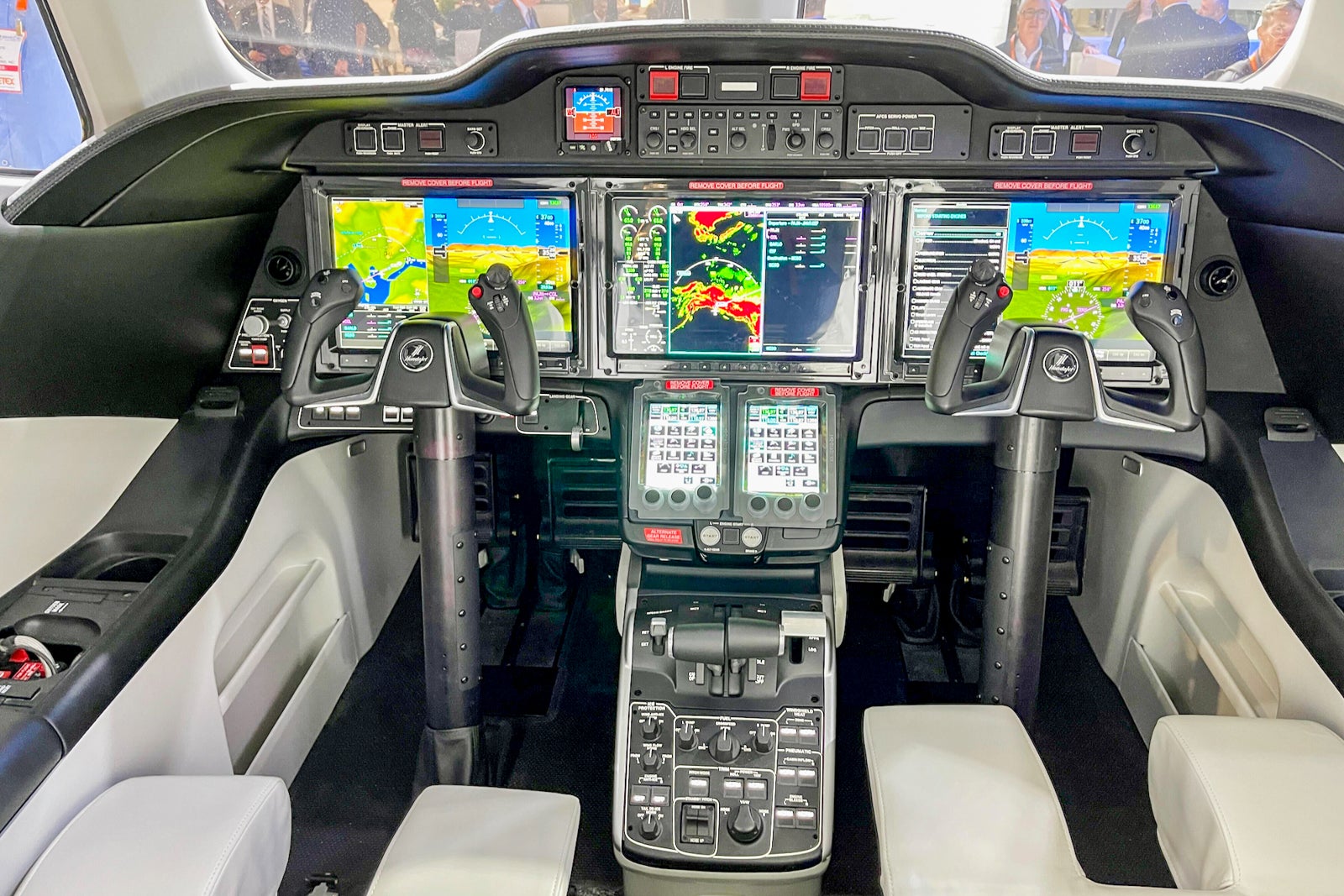
In the rear of the aircraft is a whopping 120 cubic feet of cargo space — another benefit of the over-the-wing engine configuration. It’s large enough to fit accommodate dozens of bags, as well as oversized items like skis, surfboards and bikes.
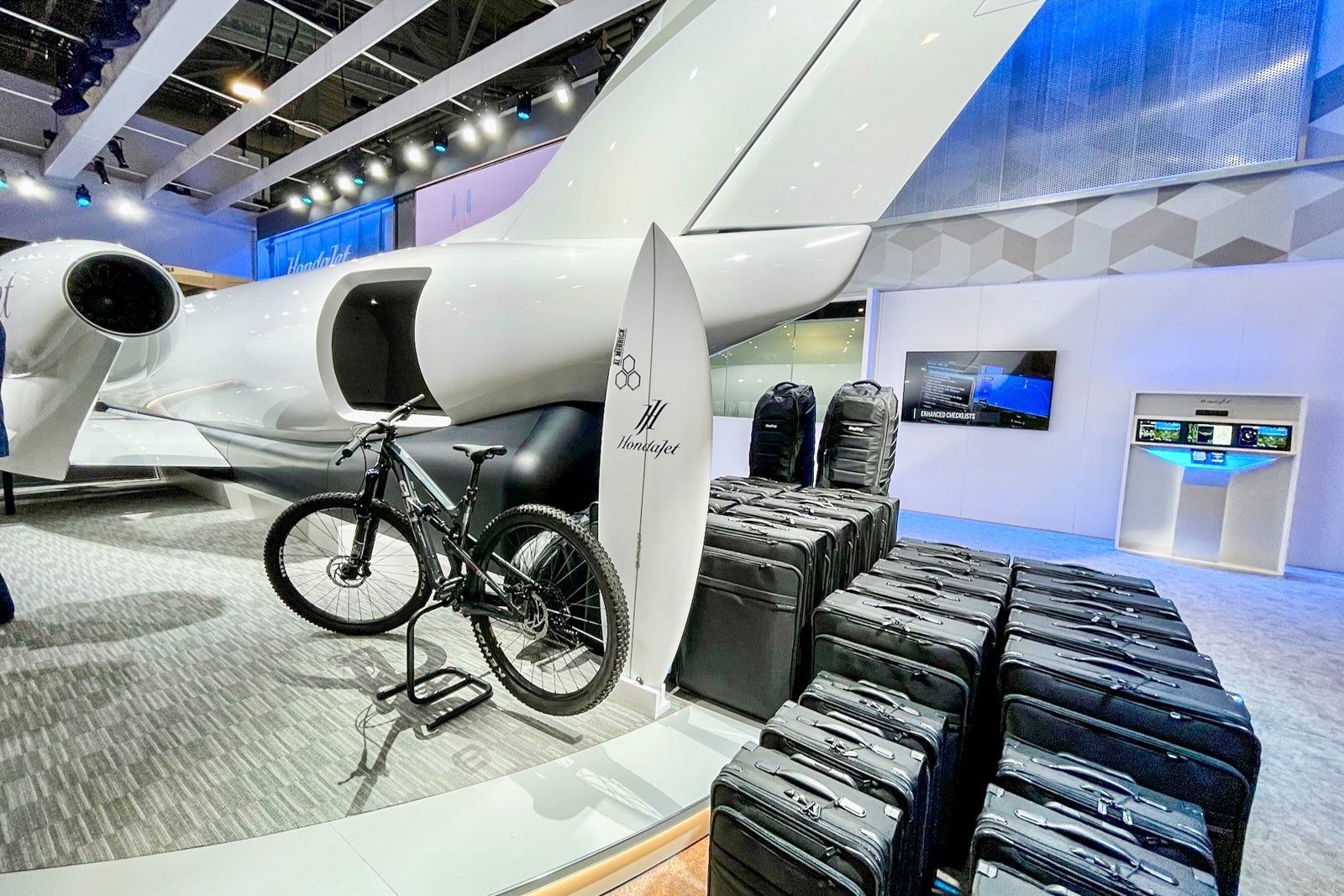
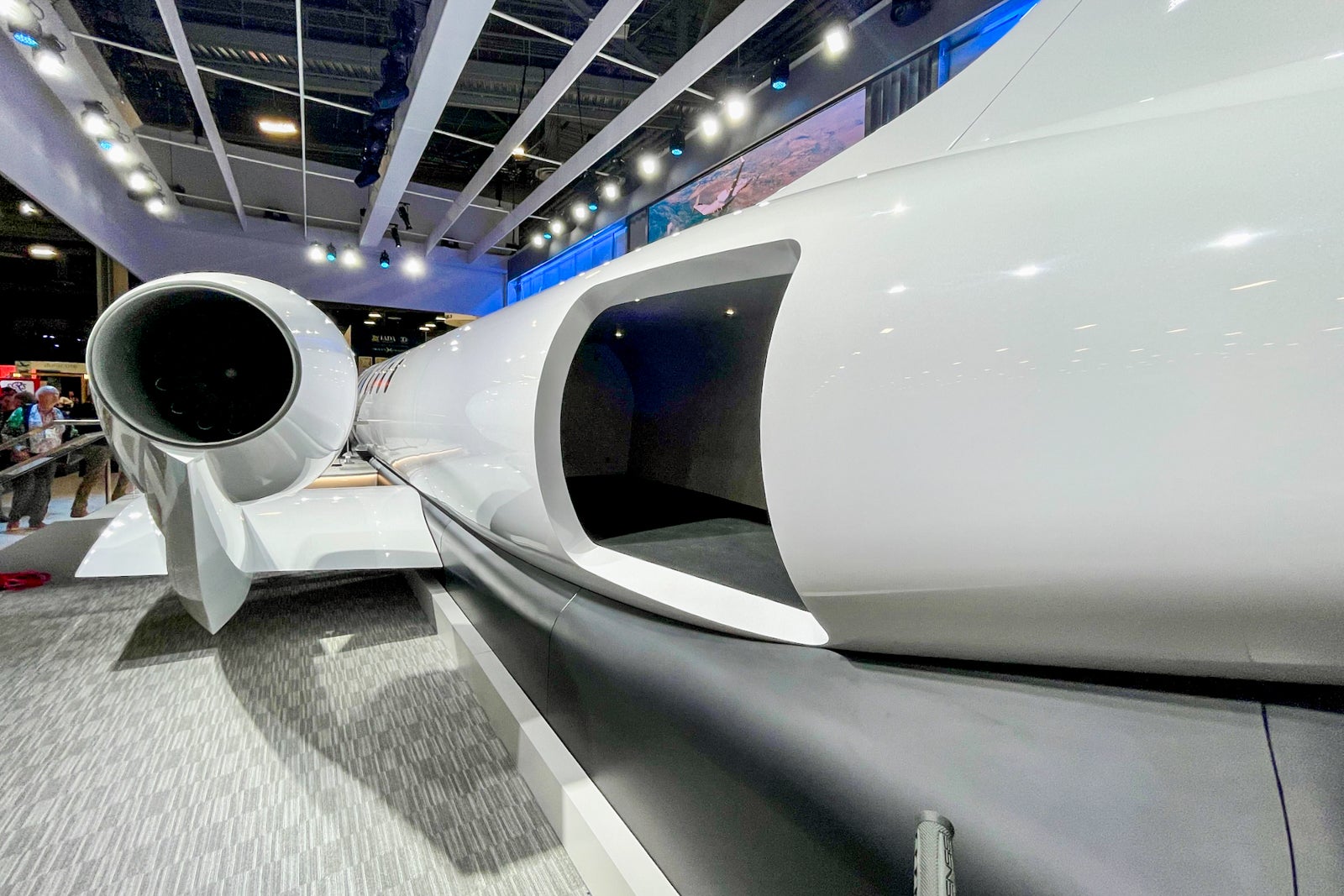
Although the 2600 model boasts many of the characteristics of a midsize jet in both performance and size, it aims to be much more efficient. Specifically, Honda expects fuel efficiency to be 20% better than light jets and 40% better than mid-size jets.
Still being in the concept stage, we don’t know yet if or when production will actually start. However, Honda Aircraft Company President and CEO Michimasa Fujino is eager about the project.
“The conditions in the business aviation industry have signaled the need for rapid cross-country travel, the ability to carry more passengers and payload, and to develop systems to cut carbon emissions,” Fujino said. “In response we developed the HondaJet 2600 Concept.”
Featured photo by Benji Stawski/The Points Guy.
No comments:
Post a Comment